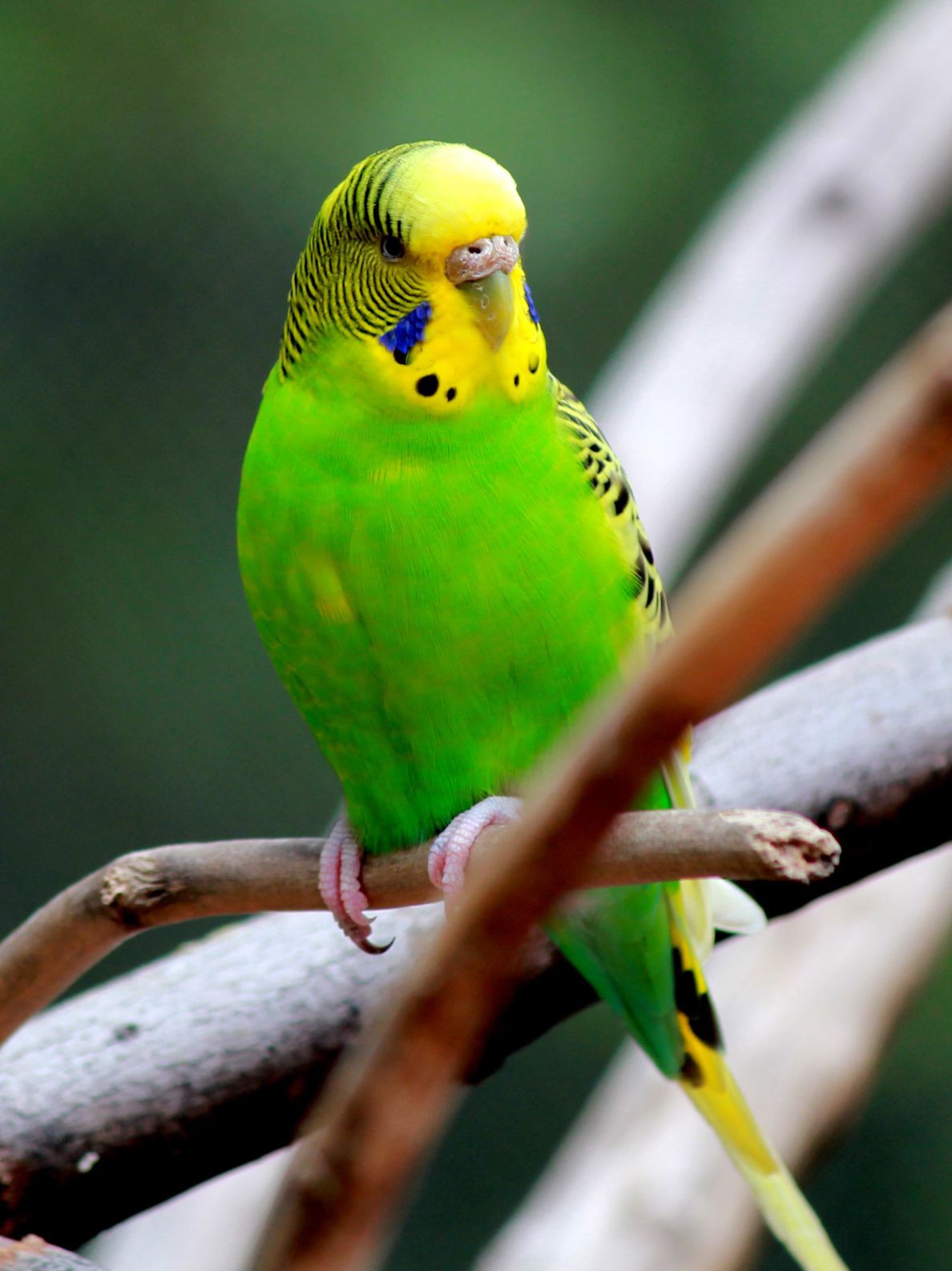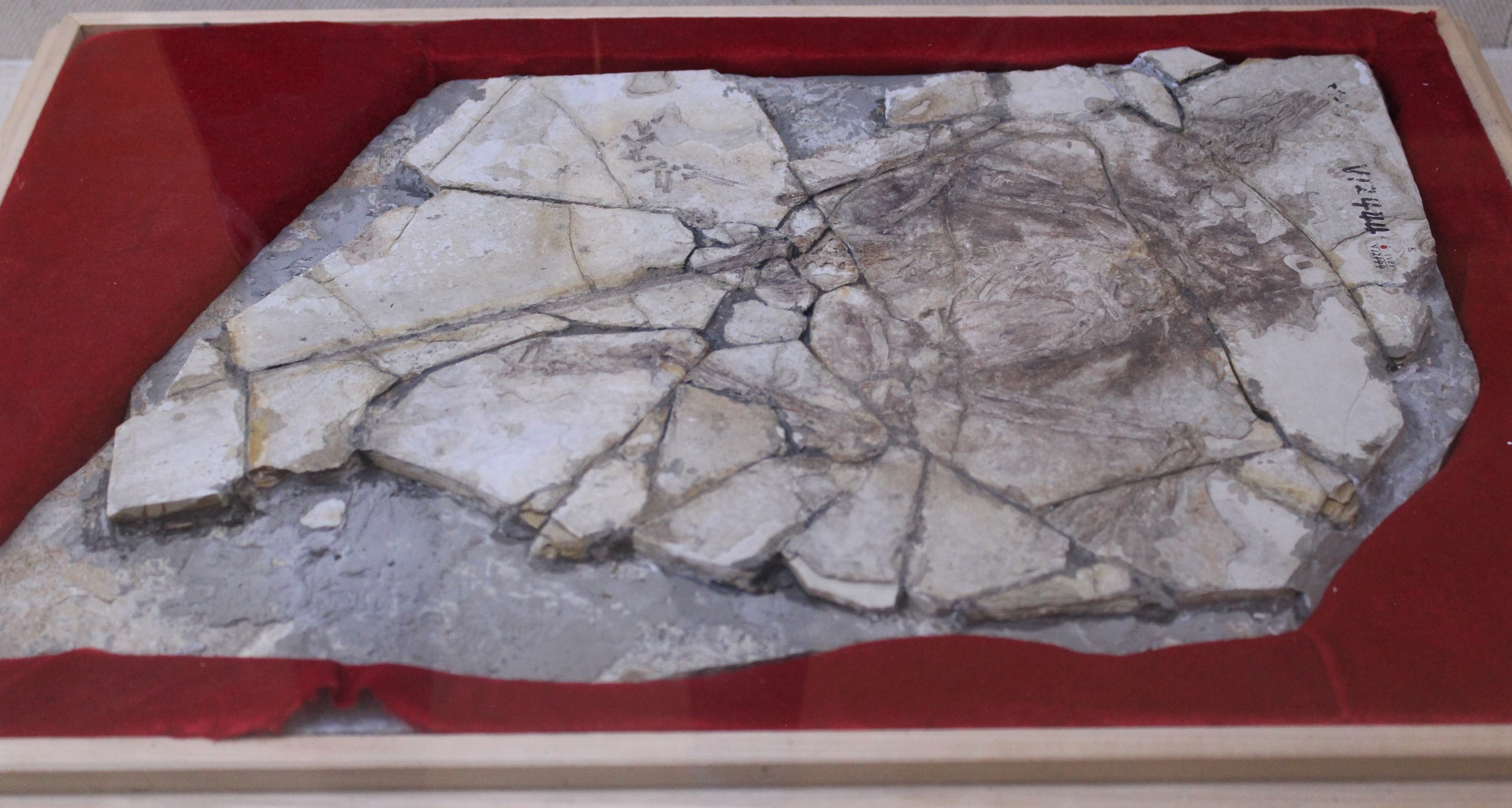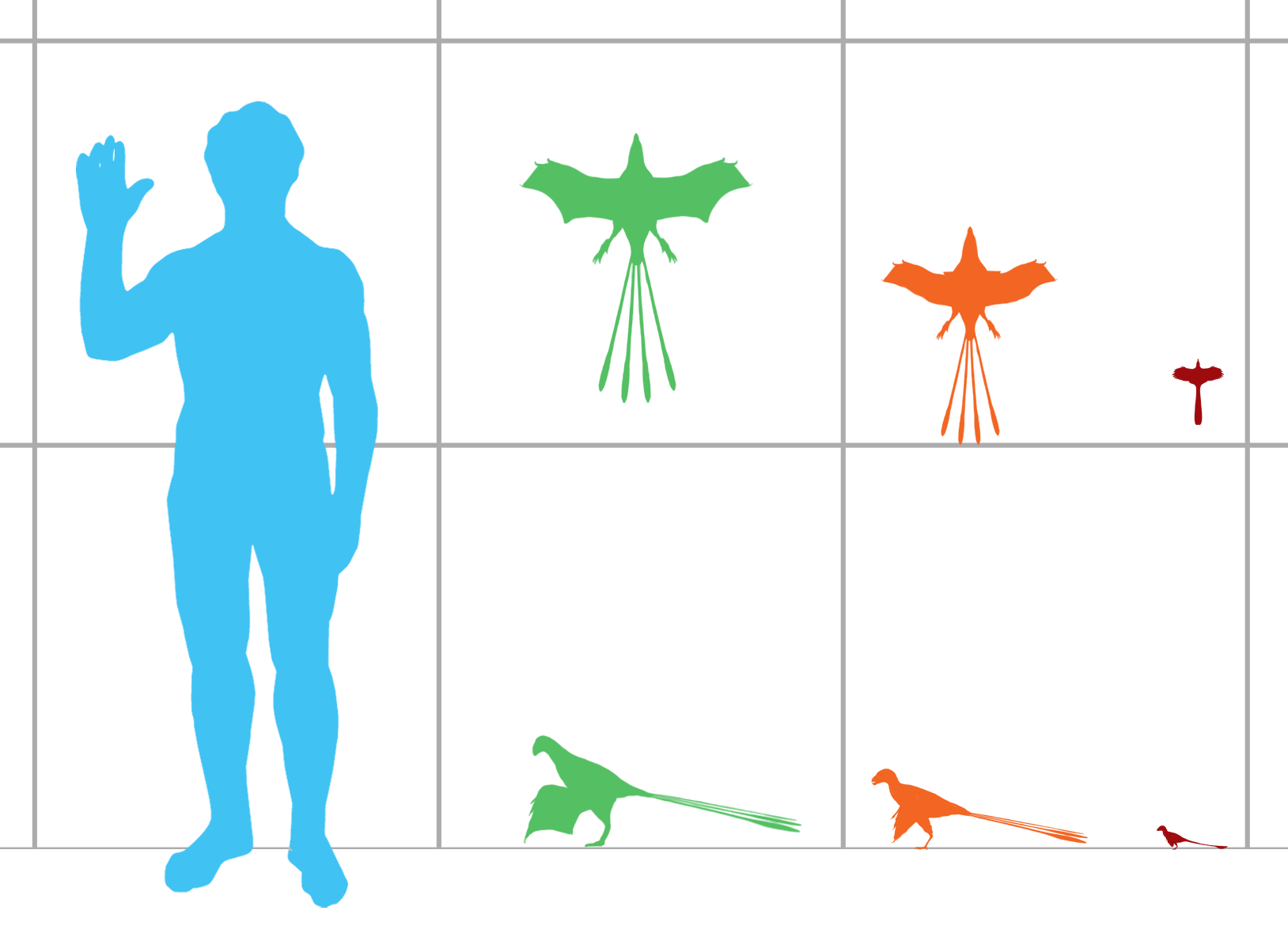|
Paravians
Paraves are a widespread group of theropod dinosaurs that originated in the Middle Jurassic period. In addition to the extinct dromaeosaurids, troodontids, anchiornithids, and possibly the scansoriopterygids, the group also contains the avialans, among which are the over ten thousand species of living birds. Early members of Paraves are well known for the possession of an enlarged claw on the second digit of the foot, which was held off the ground when walking in some species. Description Like other theropods, all paravians are bipedal, walking on their two hind legs. The teeth of primitive paravians were curved and serrated, but not blade-like except in some specialized species such as ''Dromaeosaurus albertensis''. The serrations on the front edge of dromaeosaurid and troodontid teeth were very small and fine, while the back edge had serrations which were very large and hooked. Most of the earliest paravian groups were carnivorous, though some smaller species (especially ... [...More Info...] [...Related Items...] OR: [Wikipedia] [Google] [Baidu] |
Middle Jurassic
The Middle Jurassic is the second epoch of the Jurassic Period. It lasted from about 174.1 to 163.5 million years ago. Fossils of land-dwelling animals, such as dinosaurs, from the Middle Jurassic are relatively rare, but geological formations containing land animal fossils include the Forest Marble Formation in England, the Kilmaluag Formation in Scotland,British Geological Survey. 2011Stratigraphic framework for the Middle Jurassic strata of Great Britain and the adjoining continental shelf: research report RR/11/06 British Geological Survey, Keyworth, Nottingham. the Daohugou Beds in China, the Itat Formation in Russia, and the Isalo III Formation of western Madagascar. Paleogeography During the Middle Jurassic Epoch, Pangaea began to separate into Laurasia and Gondwana, and the Atlantic Ocean formed. Eastern Laurasia was tectonically active as the Cimmerian plate continued to collide with Laurasia's southern coast, completely closing the Paleo-Tethys Ocean. A subduction zone ... [...More Info...] [...Related Items...] OR: [Wikipedia] [Google] [Baidu] |
Theropod
Theropoda (; ), whose members are known as theropods, is a dinosaur clade that is characterized by hollow bones and three toes and claws on each limb. Theropods are generally classed as a group of saurischian dinosaurs. They were ancestrally carnivorous, although a number of theropod groups evolved to become herbivores and omnivores. Theropods first appeared during the Carnian age of the late Triassic period 231.4 million years ago ( Ma) and included all the large terrestrial carnivores from the Early Jurassic until at least the close of the Cretaceous, about 66 Ma. In the Jurassic, birds evolved from small specialized coelurosaurian theropods, and are today represented by about 10,500 living species. Biology Diet and teeth Theropods exhibit a wide range of diets, from insectivores to herbivores and carnivores. Strict carnivory has always been considered the ancestral diet for theropods as a group, and a wider variety of diets was historically considered a characteri ... [...More Info...] [...Related Items...] OR: [Wikipedia] [Google] [Baidu] |
Deinonychus Patte Arrière Gauche
''Deinonychus'' ( ; ) is a genus of dromaeosaurid theropod dinosaur with one described species, ''Deinonychus antirrhopus''. This species, which could grow up to long, lived during the early Cretaceous Period, about 115–108 million years ago (from the mid-Aptian to early Albian stages). Fossils have been recovered from the U.S. states of Montana, Utah, Wyoming, and Oklahoma, in rocks of the Cloverly Formation, Cedar Mountain Formation and Antlers Formation, though teeth that may belong to ''Deinonychus'' have been found much farther east in Maryland. Paleontologist John Ostrom's study of ''Deinonychus'' in the late 1960s revolutionized the way scientists thought about dinosaurs, leading to the " dinosaur renaissance" and igniting the debate on whether dinosaurs were warm-blooded or cold-blooded. Before this, the popular conception of dinosaurs had been one of plodding, reptilian giants. Ostrom noted the small body, sleek, horizontal posture, ratite-like spine, ... [...More Info...] [...Related Items...] OR: [Wikipedia] [Google] [Baidu] |
Balaur (dinosaur)
''Balaur bondoc'' is a species of theropod dinosaur from the late Cretaceous period, in what is now Romania. It is the type species of the monotypic genus ''Balaur'', after the ''balaur'' (), a dragon of Romanian folklore. The specific name ''bondoc'' () means "stocky", so ''Balaur bondoc'' means "stocky dragon" in Romanian. This name refers to the greater musculature that ''Balaur'' had compared to its relatives. The genus, which was first described by scientists in August 2010, is known from two partial skeletons (including the type specimen). Fossils of ''Balaur'' were found in the Densuş-Ciula and Sebeș Formations of Cretaceous Romania which correspond to Hațeg island, a subtropical islandBenton, M.J., Csiki, Z., Grigorescu, D., Redelstorff, R., Sander, P.M., Stein, K., and Weishampel, D.B. (2010).Dinosaurs and the island rule: The dwarfed dinosaurs from Hațeg Island." ''Palaeogeography, Palaeoclimatology, Palaeoecology'', 293(3-4): 438–454. in the European archipela ... [...More Info...] [...Related Items...] OR: [Wikipedia] [Google] [Baidu] |
Hallux
Toes are the digits (fingers) of the foot of a tetrapod. Animal species such as cats that walk on their toes are described as being '' digitigrade''. Humans, and other animals that walk on the soles of their feet, are described as being '' plantigrade''; ''unguligrade'' animals are those that walk on hooves at the tips of their toes. Structure There are normally five toes present on each human foot. Each toe consists of three phalanx bones, the proximal, middle, and distal, with the exception of the big toe ( la, hallux). For a minority of people, the little toe also is missing a middle bone. The hallux only contains two phalanx bones, the proximal and distal. The joints between each phalanx are the interphalangeal joints. The proximal phalanx bone of each toe articulates with the metatarsal bone of the foot at the metatarsophalangeal joint. Each toe is surrounded by skin, and present on all five toes is a toenail. The toes are, from medial to lateral: * the first ... [...More Info...] [...Related Items...] OR: [Wikipedia] [Google] [Baidu] |
Eudromaeosauria
Eudromaeosauria ("true dromaeosaurs") is a subgroup of terrestrial dromaeosaurid theropod dinosaurs. They were relatively small to medium-sized, feathered hypercarnivores (with diets consisting almost entirely of other terrestrial vertebrates) that flourished in the Cretaceous Period. Eudromaeosaur fossils are known almost exclusively from the northern hemisphere. They first appeared in the early Cretaceous Period (early Aptian stage, about 124 million years ago) and survived until the end of the Cretaceous (Maastrichtian stage, Ma). The earliest known definitive eudromaeosaur is the dromaeosaurine '' Utahraptor ostrommaysi'', from the Cedar Mountain Formation, dated to 124 million years ago. However, the earlier (143-million-year-old) fossils such as those of '' Nuthetes destructor'' and several indeterminate teeth dating to the Kimmeridgian stage may represent eudromaeosaurs. Description While other dromaeosaurids filled a variety of specialized ecological niches, mainly tho ... [...More Info...] [...Related Items...] OR: [Wikipedia] [Google] [Baidu] |
Microraptor Gui
''Microraptor'' (Greek, μικρός, ''mīkros'': "small"; Latin, ''raptor'': "one who seizes") is a genus of small, four-winged dromaeosaurid dinosaurs. Numerous well-preserved fossil specimens have been recovered from Liaoning, China. They date from the early Cretaceous Jiufotang Formation ( Aptian stage), 125 to 120 million years ago. Three species have been named (''M. zhaoianus'', ''M. gui'', and ''M. hanqingi''), though further study has suggested that all of them represent variation in a single species, which is properly called ''M. zhaoianus''. ''Cryptovolans'', initially described as another four-winged dinosaur, is usually considered to be a synonym of ''Microraptor''. Like '' Archaeopteryx'', well-preserved fossils of ''Microraptor'' provide important evidence about the evolutionary relationship between birds and earlier dinosaurs. ''Microraptor'' had long pennaceous feathers that formed aerodynamic surfaces on the arms and tail but also on the legs. This led pale ... [...More Info...] [...Related Items...] OR: [Wikipedia] [Google] [Baidu] |
Coelurosaurs
Coelurosauria (; from Greek, meaning "hollow tailed lizards") is the clade containing all theropod dinosaurs more closely related to birds than to carnosaurs. Coelurosauria is a subgroup of theropod dinosaurs that includes compsognathids, tyrannosaurs, ornithomimosaurs, and maniraptorans; Maniraptora includes birds, the only known dinosaur group alive today. Most feathered dinosaurs discovered so far have been coelurosaurs. Philip J. Currie had considered it likely and probable that all coelurosaurs were feathered. However, several skin impressions found for some members of this group show pebbly, scaly skin, indicating that feathers did not completely replace scales in all taxa. In the past, Coelurosauria was used to refer to all small theropods, but this classification has since been abolished. Anatomy Bodyplan The studying of anatomical traits in coelurosaurs indicates that the last common ancestor had evolved the ability to eat and digest plant matter, adapting to an omnivo ... [...More Info...] [...Related Items...] OR: [Wikipedia] [Google] [Baidu] |
Coelurosauria
Coelurosauria (; from Greek, meaning "hollow tailed lizards") is the clade containing all theropod dinosaurs more closely related to birds than to carnosaurs. Coelurosauria is a subgroup of theropod dinosaurs that includes compsognathids, tyrannosaurs, ornithomimosaurs, and maniraptorans; Maniraptora includes birds, the only known dinosaur group alive today. Most feathered dinosaurs discovered so far have been coelurosaurs. Philip J. Currie had considered it likely and probable that all coelurosaurs were feathered. However, several skin impressions found for some members of this group show pebbly, scaly skin, indicating that feathers did not completely replace scales in all taxa. In the past, Coelurosauria was used to refer to all small theropods, but this classification has since been abolished. Anatomy Bodyplan The studying of anatomical traits in coelurosaurs indicates that the last common ancestor had evolved the ability to eat and digest plant matter, adapting to an omniv ... [...More Info...] [...Related Items...] OR: [Wikipedia] [Google] [Baidu] |
Dromaeosaurus Albertensis
''Dromaeosaurus'' (, "running lizard") is a genus of dromaeosaurid theropod dinosaur which lived during the Late Cretaceous period (middle late Campanian and Maastrichtian), sometime between 80 and 69 million years ago, in Alberta, Canada and the western United States. The type species is ''Dromaeosaurus albertensis'', which was described by William Diller Matthew and Barnum Brown in 1922. Its fossils were unearthed in the Dinosaur Park Formation. Teeth attributed to this genus have been found in the Prince Creek Formation. ''Dromaeosaurus'' is the type genus of both Dromaeosauridae and Dromaeosaurinae, which include many genera with similar characteristics to ''Dromaeosaurus'' such as possibly its closest relative ''Dakotaraptor''. ''Dromaeosaurus'' was heavily built, more so than other dromaeosaurs that are similar in size, like ''Velociraptor''. Discovery and naming Despite receiving widespread attention in popular books on dinosaurs, and the usage of a complete mounted skelet ... [...More Info...] [...Related Items...] OR: [Wikipedia] [Google] [Baidu] |
Bird
Birds are a group of warm-blooded vertebrates constituting the class Aves (), characterised by feathers, toothless beaked jaws, the laying of hard-shelled eggs, a high metabolic rate, a four-chambered heart, and a strong yet lightweight skeleton. Birds live worldwide and range in size from the bee hummingbird to the ostrich. There are about ten thousand living species, more than half of which are passerine, or "perching" birds. Birds have whose development varies according to species; the only known groups without wings are the extinct moa and elephant birds. Wings, which are modified forelimbs, gave birds the ability to fly, although further evolution has led to the loss of flight in some birds, including ratites, penguins, and diverse endemic island species. The digestive and respiratory systems of birds are also uniquely adapted for flight. Some bird species of aquatic environments, particularly seabirds and some waterbirds, have further evolved for swimming. B ... [...More Info...] [...Related Items...] OR: [Wikipedia] [Google] [Baidu] |
Scansoriopterygidae
Scansoriopterygidae (meaning "climbing wings") is an extinct family of climbing and gliding maniraptoran dinosaurs. Scansoriopterygids are known from five well-preserved fossils, representing four species, unearthed in the Tiaojishan Formation fossil beds (dating to the mid-late Jurassic Period) of Liaoning and Hebei, China. '' Scansoriopteryx heilmanni'' (and its likely synonym ''Epidendrosaurus ninchengensis'') was the first non-avian dinosaur found that had clear adaptations to an arboreal or semi-arboreal lifestyle–it is likely that they spent much of their time in trees. Both specimens showed features indicating they were juveniles, which made it difficult to determine their exact relationship to other non-avian dinosaurs and birds. It was not until the description of '' Epidexipteryx hui'' in 2008 that an adult specimen was known. In 2015, the discovery of another, larger adult specimen belonging to the species '' Yi qi'' showed that scansoriopterygids were not onl ... [...More Info...] [...Related Items...] OR: [Wikipedia] [Google] [Baidu] |







.jpg)

.jpg)
